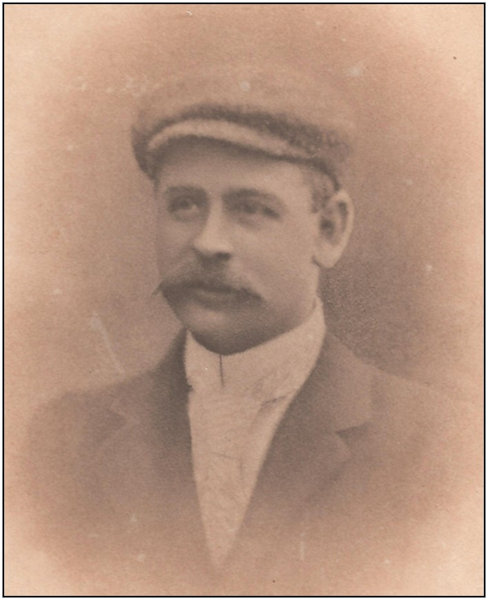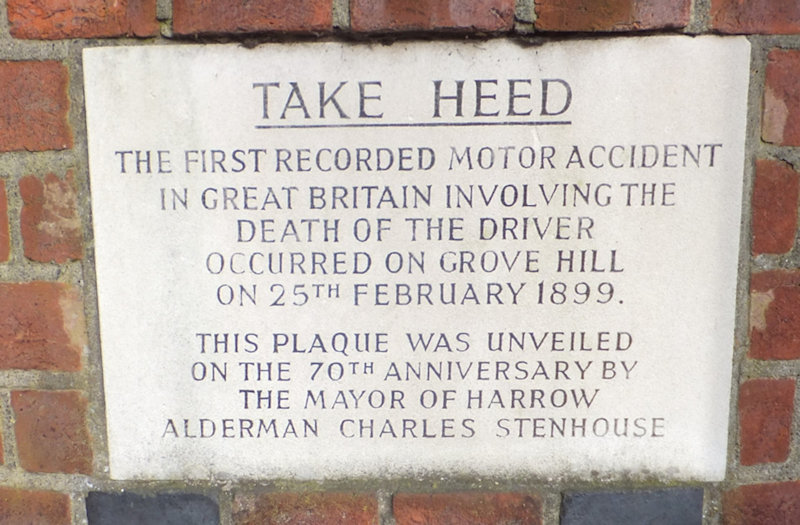By Gabby Stevens
This article was published in the April 2020 edition of Soul Search, the Journal of The Sole Society
I recently came across an article in a history magazine regarding this unfortunate first, and was surprised to see that this involved a Sewell – a Mr Edwin Root Sewell. I then thought that this might make a basis for a short article in the Sole Society magazine.
The incident occurred in Harrow-on-the-Hill, in north-west London, in 1899, and involved a Major James Richer and Mr Sewell.
By way of background, after a distinguished military career including service in India, Major Richer had returned to London where he landed a high-ranking job with the Army and Navy department store on Westminster’s Victoria Street (today rebuilt as a branch of House of Fraser).
On the look out to expand the department store’s ever increasing range of diverse goods, Major Richer (aged 63) thought it would be a good idea for the large shop to start selling cars. He turned to the Daimler motor car company who were only too happy to oblige, arranging a test drive for the 25th February 1899. The driver was Edwin Root Sewell, and the vehicle chosen was a 8 seater 6HP Daimler Wagonette. This was a bulky vehicle, with 8 seats and an open top, with thin, large wheels.

An 8 seater 6HP Daimler Wagonette of the type involved in the accident
On the day of the demonstration, Edwin drove Major Richer all the way from Whitehall up to Harrow-on-the-Hill, a picturesque location which is still home to the famously exclusive school and offers a wonderful panoramic view over the capital.
Once upon the hill, they stopped for a meal at the King’s Head Hotel… perhaps including some liquid refreshment!
After their break, Edwin Sewell once again took to the wheel, heading north along Harrow-on-the-Hill’s high street, passing the many, cluttered buildings of the prestigious Harrow School. As they approached the junction of Grove Hill and Peterborough Road where the road begins to slope downwards, disaster struck…
Gathering speed, the vehicle’s speedometer began to notch up towards a hair-raising 14 (another report claims 20) mph, forcing Edwin to slam on the brakes. This sudden action resulted in the collapse of a rear wheel, causing the Daimler to tip over. Edwin Sewell was thrown from the vehicle and died instantly.
Major Richer was less lucky and ended up pinned beneath the heavy vehicle. He was rescued but died from his injuries a few days later on the 1st March.

Edwin Root Sewell
This incident thus made the pair the UK’s first ever car occupants to die as the result of a road crash.
In 1969, a plaque was unveiled at the site of the accident to mark the event’s 70th anniversary. Although the plaque makes no mention of the names of those killed, its message is simple.

The commemoration plaque at the site of the accident
Ed: In her December 2001 Research co-ordinator’s report for the Sewell surname Diana Kennedy briefly reported on the accident. She also included some genealogical information. I have combined this below with some research that Gabby Stevens, the author of this article did on Ancestry.
Edwin was a married man at the time of his death, living in Twickenham, Middlesex, and had three (maybe four), children with his wife Elsie or Elspeth (nee Campbell). He married Elsie in 1890 at St Mathew’s Church, Yiewsley, Middlesex (only a couple of miles from where Gabby now lives). The National Probate Calendar shows he left £156 15s (£20,200 in today’s prices) to his widow Elsie.
Edwin was born in 1867 in Great Baddow, Essex and was one of
the four children of Samuel Sewell (1832-1884) a master miller and Sarah Wood (1834-????).
Samuel Sewell was the son of Peter Sewell of Great Baddow, who was married to Mary Louisa. Peter Sewell’s father was Henry Sewell who married in 1801.
Sources:
https://harrowonline.org/2016/04/13/the-story-of-britains-first-fatal-car-crash-harrow-1899/#comments
https://blackcablondon.net/2012/08/
